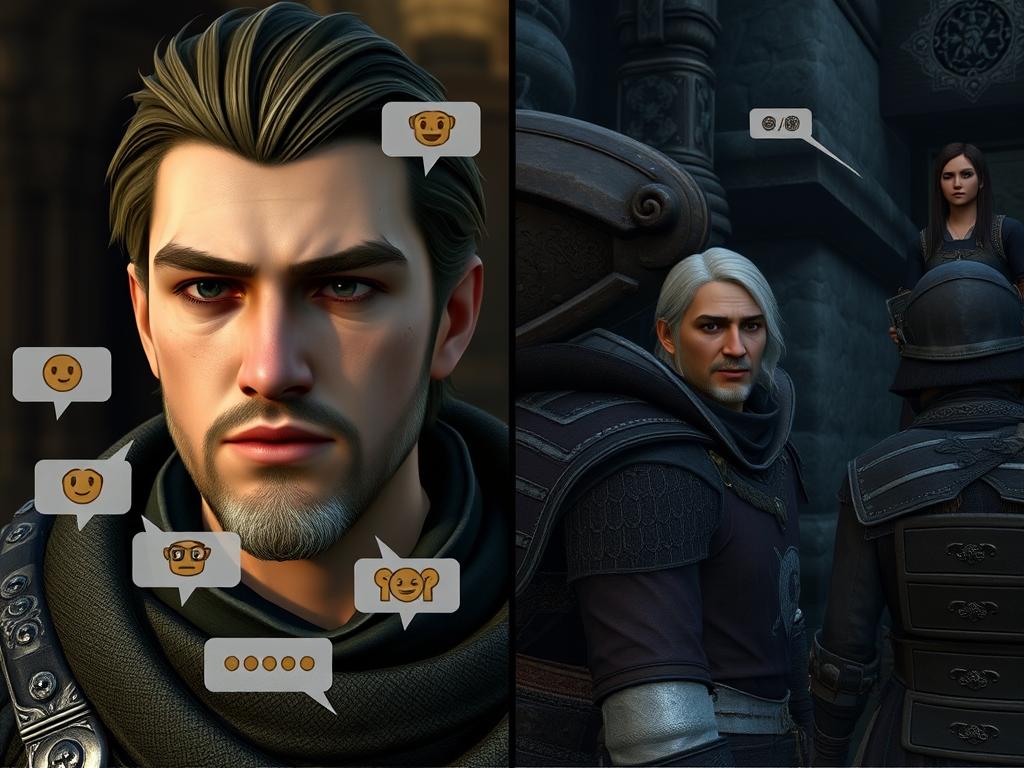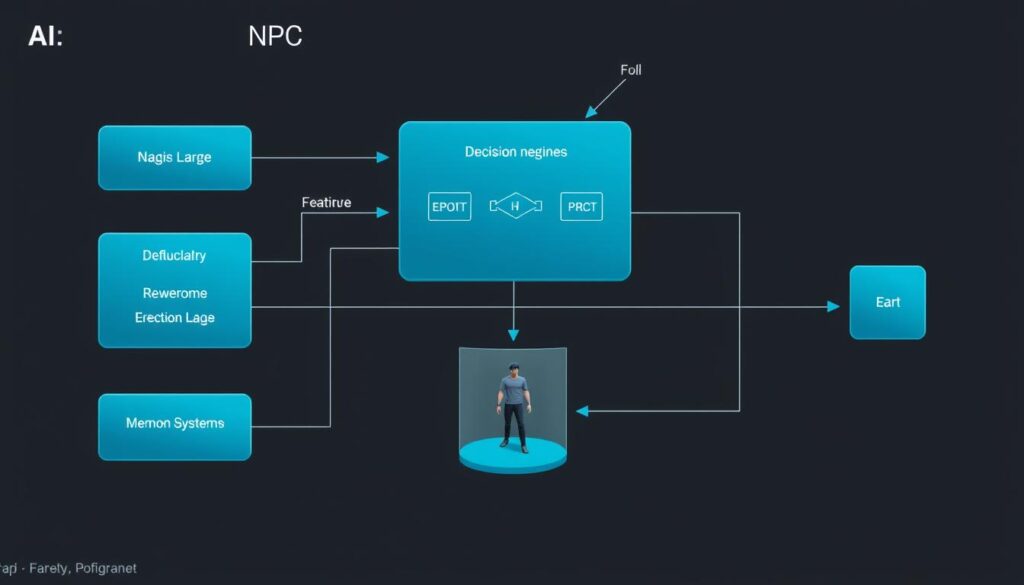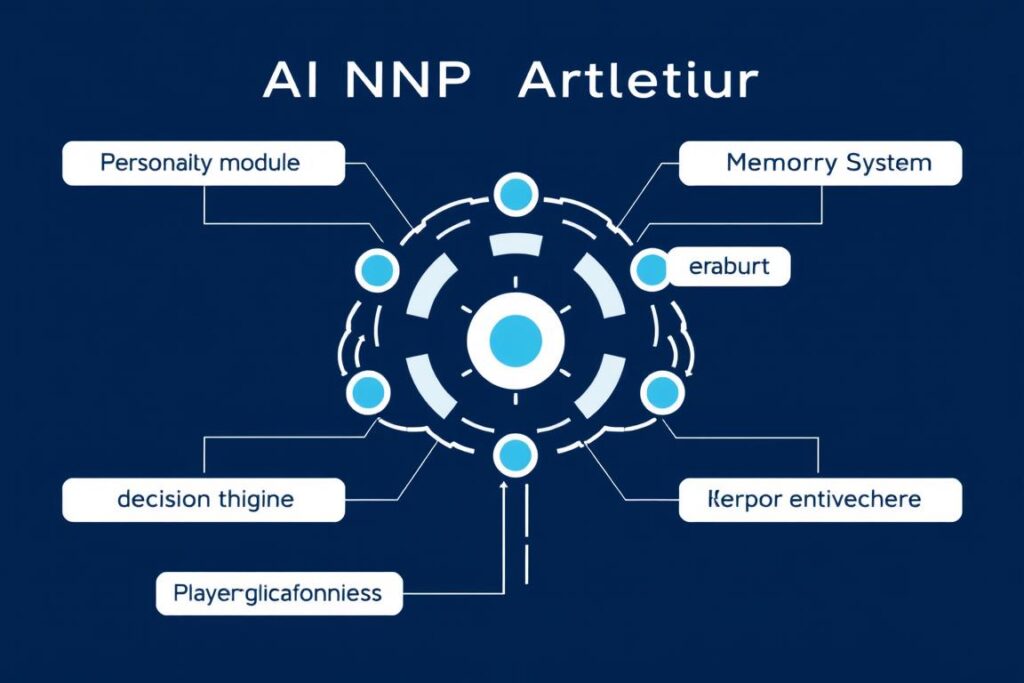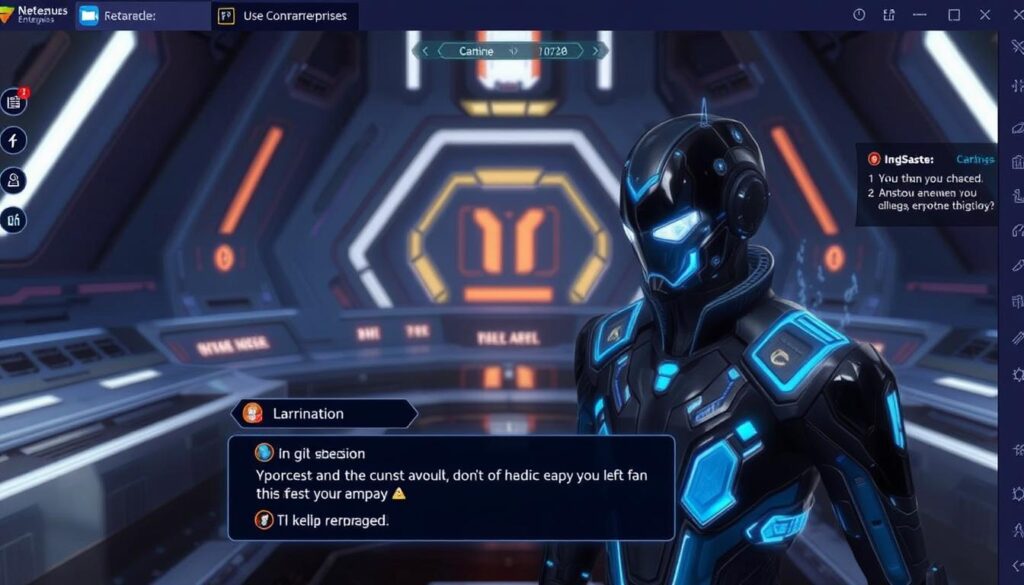The gaming industry has always been at the forefront of technological innovation, and artificial intelligence is now revolutionizing how non-playable characters (NPCs) function within game worlds. Gone are the days of predictable, scripted interactions and repetitive dialogue. Today’s AI-powered NPCs can remember your choices, adapt to your playstyle, and engage in conversations that feel remarkably human. This transformation is creating more immersive, dynamic, and personalized gaming experiences that were once the stuff of science fiction.
The Evolution of NPCs: From Scripts to Intelligence
The progression of NPC technology from simple scripted responses to advanced AI-driven behaviors
To appreciate how far AI NPCs have come, we need to understand their humble beginnings. Early video game characters operated on simple if-then logic, following predetermined paths and offering limited responses to player actions.
First Generation (1980s-1990s)
Basic scripted behaviors with limited dialogue options and predictable movement patterns. NPCs followed fixed routines regardless of player actions.
Second Generation (2000s-2010s)
Improved decision trees and conditional responses. NPCs could react to specific player choices but still within a limited framework of possibilities.
Current Generation (2020s)
AI-driven NPCs with dynamic responses, contextual awareness, memory systems, and the ability to learn from player interactions over time.
This evolution represents more than just technical advancement—it’s transforming how players connect with game worlds. Modern AI NPCs can recognize players, remember past interactions, and develop relationships that evolve naturally throughout gameplay.
Next-Gen NPC Behaviors That Transform Gameplay

Today’s AI-powered NPCs exhibit behaviors that were impossible just a few years ago. These advancements are creating more believable characters and enabling entirely new gameplay mechanics.
“The most exciting aspect of AI NPCs isn’t just that they can talk more naturally—it’s that they can create emergent gameplay moments that even the developers didn’t anticipate.”
Under the Hood: AI Technologies Powering Modern NPCs

The remarkable behaviors of modern AI NPCs are made possible by several cutting-edge technologies working in concert. Understanding these systems helps appreciate the complexity behind seemingly natural character interactions.
Large Language Models (LLMs)
The foundation of modern AI NPCs is large language models similar to those powering ChatGPT and other conversational AI systems. These models are trained on vast amounts of text data, allowing them to generate contextually appropriate responses to almost any player input.
Game developers typically fine-tune these models with game-specific content and character information to ensure responses align with the game world and individual character personalities. This prevents the generic responses that plagued early AI implementations.
Character Engines and Brain Architecture

Companies like Inworld AI have developed specialized “character engines” that extend beyond basic language models to create more complete virtual personalities. These systems typically include:
Personality Framework
Defines character traits, motivations, and behavioral tendencies that influence all interactions and decisions.
Emotion Engine
Processes inputs to determine appropriate emotional responses, affecting dialogue tone, facial expressions, and body language.
Memory Systems
Short-term and long-term memory storage that allows NPCs to recall past interactions and maintain relationship continuity.
Knowledge Base
Contains information about the game world, lore, and other characters that the NPC can reference in conversations.
Goal System
Enables autonomous behavior by giving NPCs objectives they pursue independently.
Contextual Awareness
Allows NPCs to understand their environment and current game state, including time, location, and nearby entities.
Want to learn more about AI character technology?
Discover how game developers are implementing these systems in our free technical guide.
Case Studies: AI NPCs in Recent Games
Several recent games have pushed the boundaries of what’s possible with AI-powered characters. These examples showcase different approaches to implementing advanced NPC intelligence.

Niantic’s Wol (2023)
This augmented reality experience features Wol, an AI-powered owl companion that can answer questions about the player’s real-world environment. Using spatial mapping technology combined with generative AI, Wol transforms physical spaces into interactive fantasy worlds.
What makes Wol remarkable is how it combines environmental awareness with conversational AI. The character can recognize objects in the player’s surroundings and incorporate them into its responses, creating a seamless blend between the real and virtual worlds.

NetEase’s Cygnus Enterprises (2023)
This sci-fi adventure game features AI companions that evolve based on player interactions. What sets Cygnus apart is its relationship system, where NPCs develop unique personalities influenced by how players treat them throughout the game.
The game’s NPCs demonstrate remarkable memory capabilities, referencing conversations from hours earlier and adapting their behavior based on the player’s consistent choices. This creates deeply personalized gameplay where no two players experience the same character development.

NVIDIA and Convai’s CES 2024 Demo
While not a commercial game, this tech demo showcased the future of AI NPCs with characters that could engage in natural voice conversations with players. The demo featured Jin, a ramen shop owner, and Nova, a customer, both capable of remembering details from earlier in the conversation.
What made this demo particularly impressive was the integration of NVIDIA’s Avatar Cloud Engine for realistic facial animations and text-to-speech synthesis, creating characters that not only said believable things but looked and sounded convincing while doing so.
Developer Insights: Challenges and Solutions

Creating truly intelligent NPCs presents numerous technical and design challenges. Game developers have shared insights about the obstacles they’ve faced and the innovative solutions they’ve developed.
“The biggest challenge isn’t making NPCs smart—it’s making them appropriately smart for the game context. An NPC that’s too intelligent can break game balance, while one that’s not intelligent enough feels disappointing.”
Technical Challenges
Performance Optimization
Running sophisticated AI models requires significant computational resources. Developers have addressed this through techniques like:
- Cloud-based processing for complex dialogue generation
- Local lightweight models for immediate responses
- Hybrid approaches that balance responsiveness with depth
Content Control
Ensuring AI-generated content remains appropriate and aligned with the game’s narrative has been a major focus:
- Implementing guardrails to prevent inappropriate responses
- Creating character-specific knowledge bases to maintain consistency
- Developing fallback systems when AI responses don’t meet quality thresholds

Design Innovations
Beyond technical solutions, developers have created innovative design approaches to integrate AI NPCs effectively:
“We’ve found that the most engaging AI NPCs aren’t necessarily the most realistic ones, but those with distinctive personalities and clear motivations. Players connect with characters who feel consistent and have understandable goals.”
Ethical Considerations for Hyper-Realistic NPCs

As NPCs become increasingly realistic and capable of forming emotional connections with players, new ethical questions emerge that developers and players alike must consider.
Player Attachment and Emotional Impact
Players can form genuine emotional attachments to AI characters, raising questions about the psychological impact of these relationships. Game developers are now considering:
Representation and Bias
AI systems can inadvertently perpetuate biases present in their training data. For game NPCs, this raises important considerations:
Opportunities
- Creating more diverse and representative characters
- Allowing characters to express authentic cultural perspectives
- Enabling more nuanced representation of complex issues
Challenges
- Preventing stereotypical or harmful representations
- Ensuring cultural sensitivity in generated content
- Avoiding reinforcement of problematic narratives
Creative Attribution and Ownership
When NPCs generate unique dialogue and behaviors, questions arise about who owns this content:
“We’re entering uncharted territory where the line between authored content and emergent experiences is blurring. The industry needs thoughtful guidelines that protect creative professionals while embracing these new technologies.”
Industry Response: Organizations like the International Game Developers Association (IGDA) are developing ethical frameworks specifically addressing AI NPCs, focusing on transparency, player well-being, and fair compensation for creative contributors.
The Future of AI-Driven Gameplay

The integration of AI into NPCs is just beginning. Industry experts predict several exciting developments that will transform how we experience games in the coming years.
Emergent Narratives and Procedural Storytelling
Future games will likely feature less scripted content and more emergent storytelling driven by AI characters with agency and goals:
Cross-Game Persistence
As AI character technology matures, we may see NPCs that exist beyond the boundaries of a single game:
Multimodal Interaction

Future AI NPCs will interact with players through multiple communication channels:
“The most revolutionary aspect of AI NPCs isn’t that they’ll act more human—it’s that they’ll enable entirely new types of games we haven’t even imagined yet. We’re not just making better characters; we’re creating the foundation for a new generation of interactive experiences.”
Industry Partnerships and Standardization
Major industry players are already forming partnerships to advance AI NPC technology:

Conclusion: A New Era of Interactive Entertainment
AI-powered NPCs represent more than just a technical advancement—they’re ushering in a fundamental shift in how we experience interactive entertainment. By creating characters with authentic personalities, emotional depth, and the ability to form meaningful relationships with players, game developers are blurring the line between scripted experiences and living virtual worlds.
While challenges remain in terms of technical implementation, ethical considerations, and creative integration, the trajectory is clear: tomorrow’s games will be populated by characters that remember, learn, and evolve alongside players, creating experiences that are uniquely personal and endlessly replayable.
As this technology continues to mature, we can expect games that don’t just tell stories but create them collaboratively with players—worlds where every NPC has the potential to surprise, delight, and forge connections that feel genuinely meaningful.
Stay Updated on AI Gaming Advancements
Join our community to receive the latest news, exclusive insights, and early access to demos featuring cutting-edge AI NPCs.







